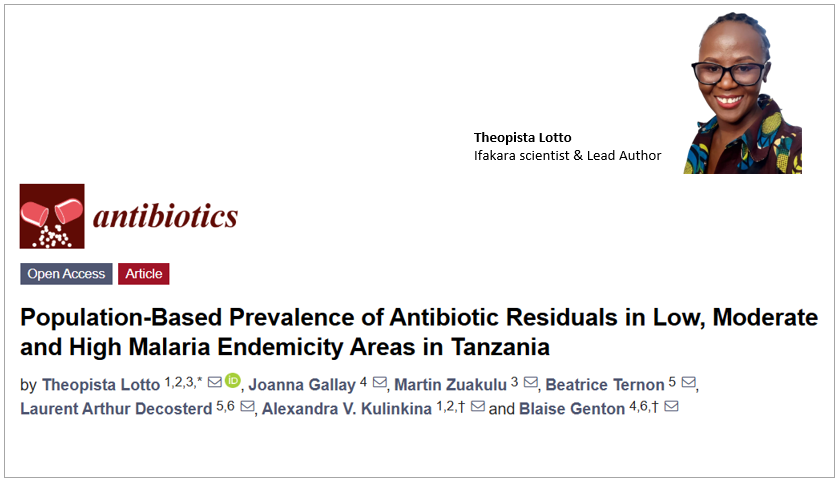
RESISTANCE: Unmasking the relationship between malaria and antibiotics

Antibiotics are a cornerstone of modern medicine, yet their overuse and misuse can contribute to antimicrobial resistance (AMR), a growing global health crisis. A recent study in Tanzania sheds light on the widespread use of antibiotics, particularly among individuals without malaria, emphasizing the urgent need for improved diagnostic tools and more responsible prescription practices.
Study insights on antibiotic use in malaria-endemic areas
The study, published in the journal of Antibiotics, was conducted in 2015 by scientists from Tanzania and Switzerland. It analyzed data from 6,000 individuals and revealed a concerning trend—many people take antibiotics even when they test negative for malaria.
Although malaria treatment primarily involves antimalarials, antibiotics are sometimes prescribed to manage secondary infections. However, this practice raises concerns about drug resistance.
Led by Theopista Lotto from the Ifakara Health Institute, the scientists identified key patterns linked to malaria prevalence, healthcare access, and socioeconomic factors. Their findings provide insights into antibiotic use in malaria-endemic regions and highlight opportunities for more rational prescribing practices.
What the study found
Using advanced technology, scientists analyzed antibiotic residues in blood samples from three Tanzanian regions—Mwanza, Mbeya, and Mtwara—each with different malaria transmission rates.
Alarmingly, 14% of the study population had antibiotics in their system, with trimethoprim and sulfamethoxazole being the most commonly detected drugs. These findings are consistent with previous studies indicating widespread antibiotic exposure, even in the absence of bacterial infections.
Regional differences in antibiotic use
Theopista and colleagues observed significant regional differences in antibiotic presence. Mwanza had the highest rate, with 17.2% of participants testing positive for antibiotics, likely influenced by its high malaria burden (20.5%) and relatively better healthcare access and increased self-medication.
In Mbeya, 14.6% of participants had antibiotics in their system, which was likely influenced by the region’s higher HIV prevalence (9.3%) and better healthcare accessibility. The region has malaria prevalence at just 4.6%.
Mtwara had the lowest rate antibiotic detection rate at 11.2% despite having the highest malaria prevalence (24.3%). This is potentially due to limited healthcare access and a greater reliance on traditional medicine in the population.
Why do these patterns exist?
Several factors contribute to these patterns in antibiotic use. The climate, disease burden and healthcare accessibility in different regions play a significant role. Mtwara, with its warmer and wetter climate, provides ideal conditions for malaria transmission, whereas cooler areas like Mbeya experience less malaria but higher rates of antibiotic use due to other infections.
Healthcare access also varies across the regions: Mwanza has more healthcare facilities, but limited access to care often leads people to self-medicate. In contrast, Mtwara has fewer healthcare facilities, which limits antibiotic use despite its high malaria rates.
How Tanzania compares
According to scientists, Tanzania’s findings align with studies from other malaria-endemic regions. In Cameroon, 36.7% of primary healthcare prescriptions include antibiotics, often due to diagnostic uncertainty. In Ghana, antibiotic use remains high despite a 50% decline in malaria prevalence. Similarly, in Sudan, antibiotics continue to be prescribed alongside malaria treatments despite modern diagnostics.
The scientists suggest this pattern stems from a widespread precautionary approach, where clinicians prescribe antibiotics alongside antimalarials to prevent possible bacterial co-infections—even without diagnostic confirmation.
“This study identifies a complex relationship between antibiotics and malaria endemicity settings. While the prevalence of residual antibiotics does not directly align with malaria transmission rates, the findings suggest that healthcare provider practices, particularly the co-prescription of antibiotics and antimalarials, play a significant role,” explained the scientists.
What needs to change?
To curb antibiotic overuse and mitigate AMR, researchers recommend several key interventions. First, improved diagnostic tools are needed to ensure that unnecessary antibiotic prescriptions are reduced by improving both malaria and bacterial infection testing.
Second, they call for enforcement of stricter drug regulations as many people access antibiotics without prescriptions from informal drug markets, which leads to misuse. Finally, public education on the proper use of antibiotics is necessary to raise awareness and prevent resistance.
“The higher odds of antibiotic detection among malaria-negative individuals also point to the need for improved diagnostic capacities to reduce unnecessary antibiotic use,"
"These insights are important for designing targeted interventions that balance effective malaria management with the judicious use of antibiotics, ultimately mitigating the risk of antimicrobial resistance in malaria-endemic regions,” noted the scientists.
Moreover, scientists call for future studies to explore the effectiveness of policies aimed at reducing unnecessary antibiotic prescriptions, such as stricter adherence to mRDT results or clinician training programs. Addressing these issues will be vital in balancing effective malaria treatment while mitigating AMR risks in Tanzania and beyond.
Read the publication here.
